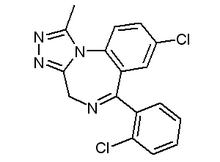Contrary to common belief, insomnia--not hypnotic use--in elderly nursing home residents is correlated with a higher risk of subsequent falls.
In this secondary analysis of a large, longitudinal assessment database, researchers analyzed 34,163 residents (age 65 and older; 76% women) in 437 Michigan nursing homes in 2001. Predictors were baseline reports of insomnia (previous month) and use of hypnotics (previous week). Hypnotics included aprobarbital, flurazepam, quazepam, triazolam, pentobarbital, ethchlorvynol, estazolam, and temazepam. Potential confounding factors, eg, cognitive status, functional status, proximity to death, illness burden, and number of medications, were considered.
Hypnotic use did not predict falls (adjusted odds ratio [AOR]=1.13; 95% CI=0.98,1.30), researchers found. Neither did insomnia predict future falls (AOR=1.52; 95% CI=1.38, 1.66). Untreated insomnia (AOR=1.55; 95% CI=1.41, 1.71) and hypnotic-treated (unresponsive) insomnia (AOR=1.32; 95% CI=1.02,1.70) predicted more falls than did absence of insomnia. Adjusting for confounding factors, insomnia and hypnotic use were not linked to subsequent hip fracture.
Based on these preliminary findings, researchers expressed reluctance to suggest hypnotic use can protect against future falls. However, Alon Avidan, MD, MPH, director, Sleep Disorders Clinic, Department of Neurology at University of Michigan, said the drugs may offer benefit. "Hypnotics, when appropriately used and selected, may consolidate sleep, prevent insomnia, and reduce the risk of falling due to getting out of bed in the middle of the night drowsy."
While this study demonstrates hypnotics cause an increased risk of falls in nursing home residents, Dr. Avidan said the analysis, controlling for variables, showed that insomnia, not hypnotics, is a risk factor for falls. Further, neither insomnia, nor use of hypnotics, is a risk factor for hip fracture. "We propose that hypnotics, by keeping patients asleep instead of wandering, protect them from falling. It may be time to rethink the notion that hypnotics are risky for geriatric patients. Now, insomnia treatment is not only a quality of life issue, but perhaps a safety issue as well."
Source: Avidan AY, Fries BE, James ML, Szafara KL, Wright GT, Chervin RD. Insomnia and hypnotic use, recorded in the Minimum Data Set, as predictors of falls and hip fractures in Michigan nursing homes. J Am Geriatr Soc 2005 (online).
COPYRIGHT 2005 Advanstar Communications, Inc.
COPYRIGHT 2005 Gale Group



